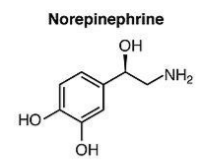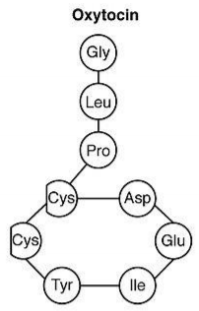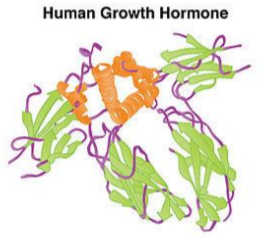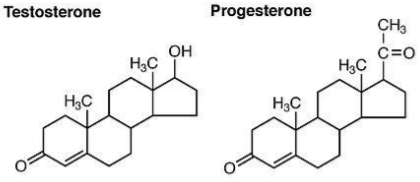Lab 12: Endocrine System
- Page ID
- 24401
\( \newcommand{\vecs}[1]{\overset { \scriptstyle \rightharpoonup} {\mathbf{#1}} } \)
\( \newcommand{\vecd}[1]{\overset{-\!-\!\rightharpoonup}{\vphantom{a}\smash {#1}}} \)
\( \newcommand{\dsum}{\displaystyle\sum\limits} \)
\( \newcommand{\dint}{\displaystyle\int\limits} \)
\( \newcommand{\dlim}{\displaystyle\lim\limits} \)
\( \newcommand{\id}{\mathrm{id}}\) \( \newcommand{\Span}{\mathrm{span}}\)
( \newcommand{\kernel}{\mathrm{null}\,}\) \( \newcommand{\range}{\mathrm{range}\,}\)
\( \newcommand{\RealPart}{\mathrm{Re}}\) \( \newcommand{\ImaginaryPart}{\mathrm{Im}}\)
\( \newcommand{\Argument}{\mathrm{Arg}}\) \( \newcommand{\norm}[1]{\| #1 \|}\)
\( \newcommand{\inner}[2]{\langle #1, #2 \rangle}\)
\( \newcommand{\Span}{\mathrm{span}}\)
\( \newcommand{\id}{\mathrm{id}}\)
\( \newcommand{\Span}{\mathrm{span}}\)
\( \newcommand{\kernel}{\mathrm{null}\,}\)
\( \newcommand{\range}{\mathrm{range}\,}\)
\( \newcommand{\RealPart}{\mathrm{Re}}\)
\( \newcommand{\ImaginaryPart}{\mathrm{Im}}\)
\( \newcommand{\Argument}{\mathrm{Arg}}\)
\( \newcommand{\norm}[1]{\| #1 \|}\)
\( \newcommand{\inner}[2]{\langle #1, #2 \rangle}\)
\( \newcommand{\Span}{\mathrm{span}}\) \( \newcommand{\AA}{\unicode[.8,0]{x212B}}\)
\( \newcommand{\vectorA}[1]{\vec{#1}} % arrow\)
\( \newcommand{\vectorAt}[1]{\vec{\text{#1}}} % arrow\)
\( \newcommand{\vectorB}[1]{\overset { \scriptstyle \rightharpoonup} {\mathbf{#1}} } \)
\( \newcommand{\vectorC}[1]{\textbf{#1}} \)
\( \newcommand{\vectorD}[1]{\overrightarrow{#1}} \)
\( \newcommand{\vectorDt}[1]{\overrightarrow{\text{#1}}} \)
\( \newcommand{\vectE}[1]{\overset{-\!-\!\rightharpoonup}{\vphantom{a}\smash{\mathbf {#1}}}} \)
\( \newcommand{\vecs}[1]{\overset { \scriptstyle \rightharpoonup} {\mathbf{#1}} } \)
\( \newcommand{\vecd}[1]{\overset{-\!-\!\rightharpoonup}{\vphantom{a}\smash {#1}}} \)
\(\newcommand{\avec}{\mathbf a}\) \(\newcommand{\bvec}{\mathbf b}\) \(\newcommand{\cvec}{\mathbf c}\) \(\newcommand{\dvec}{\mathbf d}\) \(\newcommand{\dtil}{\widetilde{\mathbf d}}\) \(\newcommand{\evec}{\mathbf e}\) \(\newcommand{\fvec}{\mathbf f}\) \(\newcommand{\nvec}{\mathbf n}\) \(\newcommand{\pvec}{\mathbf p}\) \(\newcommand{\qvec}{\mathbf q}\) \(\newcommand{\svec}{\mathbf s}\) \(\newcommand{\tvec}{\mathbf t}\) \(\newcommand{\uvec}{\mathbf u}\) \(\newcommand{\vvec}{\mathbf v}\) \(\newcommand{\wvec}{\mathbf w}\) \(\newcommand{\xvec}{\mathbf x}\) \(\newcommand{\yvec}{\mathbf y}\) \(\newcommand{\zvec}{\mathbf z}\) \(\newcommand{\rvec}{\mathbf r}\) \(\newcommand{\mvec}{\mathbf m}\) \(\newcommand{\zerovec}{\mathbf 0}\) \(\newcommand{\onevec}{\mathbf 1}\) \(\newcommand{\real}{\mathbb R}\) \(\newcommand{\twovec}[2]{\left[\begin{array}{r}#1 \\ #2 \end{array}\right]}\) \(\newcommand{\ctwovec}[2]{\left[\begin{array}{c}#1 \\ #2 \end{array}\right]}\) \(\newcommand{\threevec}[3]{\left[\begin{array}{r}#1 \\ #2 \\ #3 \end{array}\right]}\) \(\newcommand{\cthreevec}[3]{\left[\begin{array}{c}#1 \\ #2 \\ #3 \end{array}\right]}\) \(\newcommand{\fourvec}[4]{\left[\begin{array}{r}#1 \\ #2 \\ #3 \\ #4 \end{array}\right]}\) \(\newcommand{\cfourvec}[4]{\left[\begin{array}{c}#1 \\ #2 \\ #3 \\ #4 \end{array}\right]}\) \(\newcommand{\fivevec}[5]{\left[\begin{array}{r}#1 \\ #2 \\ #3 \\ #4 \\ #5 \\ \end{array}\right]}\) \(\newcommand{\cfivevec}[5]{\left[\begin{array}{c}#1 \\ #2 \\ #3 \\ #4 \\ #5 \\ \end{array}\right]}\) \(\newcommand{\mattwo}[4]{\left[\begin{array}{rr}#1 \amp #2 \\ #3 \amp #4 \\ \end{array}\right]}\) \(\newcommand{\laspan}[1]{\text{Span}\{#1\}}\) \(\newcommand{\bcal}{\cal B}\) \(\newcommand{\ccal}{\cal C}\) \(\newcommand{\scal}{\cal S}\) \(\newcommand{\wcal}{\cal W}\) \(\newcommand{\ecal}{\cal E}\) \(\newcommand{\coords}[2]{\left\{#1\right\}_{#2}}\) \(\newcommand{\gray}[1]{\color{gray}{#1}}\) \(\newcommand{\lgray}[1]{\color{lightgray}{#1}}\) \(\newcommand{\rank}{\operatorname{rank}}\) \(\newcommand{\row}{\text{Row}}\) \(\newcommand{\col}{\text{Col}}\) \(\renewcommand{\row}{\text{Row}}\) \(\newcommand{\nul}{\text{Nul}}\) \(\newcommand{\var}{\text{Var}}\) \(\newcommand{\corr}{\text{corr}}\) \(\newcommand{\len}[1]{\left|#1\right|}\) \(\newcommand{\bbar}{\overline{\bvec}}\) \(\newcommand{\bhat}{\widehat{\bvec}}\) \(\newcommand{\bperp}{\bvec^\perp}\) \(\newcommand{\xhat}{\widehat{\xvec}}\) \(\newcommand{\vhat}{\widehat{\vvec}}\) \(\newcommand{\uhat}{\widehat{\uvec}}\) \(\newcommand{\what}{\widehat{\wvec}}\) \(\newcommand{\Sighat}{\widehat{\Sigma}}\) \(\newcommand{\lt}{<}\) \(\newcommand{\gt}{>}\) \(\newcommand{\amp}{&}\) \(\definecolor{fillinmathshade}{gray}{0.9}\)Introduction:
An animal’s endocrine system controls body processes through the production, secretion, and regulation of hormones, which serve as chemical “messengers” functioning in cellular and organ activity and, ultimately, maintaining the body’s homeostasis. The endocrine system plays a role in growth, metabolism, and sexual development. In humans, common endocrine system diseases include thyroid disease and diabetes mellitus. In organisms that undergo metamorphosis, the process is controlled by the endocrine system. The transformation from tadpole to frog, for example, is complex and nuanced to adapt to specific environments and ecological circumstances.
| Table 1: Different Classes of Hormones | ||
| Hormone Class | Components | Example(s) |
| Amine Hormone | Amino acids with modified groups (norepinephrine's carboxyl group is replaced with a benzene ring.) |  |
| Peptide Hormone | Short chains of linked amino acids. |  |
| Protein Hormone | Long chains of linked amino acids. |  |
| Steroid Hormone | Derived from the lipid cholesterol |  |
Maintaining homeostasis within the body requires the coordination of many different systems and organs. Communication between neighboring cells, and between cells and tissues in distant parts of the body, occurs through the release of chemicals called hormones. Hormones are released into body fluids (usually blood) that carry these chemicals to their target cells. At the target cells, which are cells that have a receptor for a signal or ligand from a signal cell, the hormones elicit a response. The cells, tissues, and organs that secrete hormones make up the endocrine system. Examples of glands of the endocrine system include the adrenal glands, which produce hormones such as epinephrine and norepinephrine that regulate responses to stress, and the thyroid gland, which produces thyroid hormones that regulate metabolic rates. Although there are many different hormones in the human body, they can be divided into three classes based on their chemical structure: lipid-derived, amino acid-derived, and peptide (peptide and proteins) hormones.
If endocrine glands are not functioning properly the body can be out of homeostasis and a patient may be diagnosed with an endocrine system disease or disorder (Figure 1). In today’s lab, you will be using your knowledge of the endocrine system and various hormones to diagnose patients. The objectives of today’s lab are to identify the main human endocrine glands, diagnose “patients” with endocrine diseases based on their symptoms, and write a case study for another endocrine disease.

Exercise 1:
Endocrine glands function by releasing hormones that move through the blood to targets throughout the body. The structures labeled A-J in Figure 2 are true endocrine glands; however, other tissues and organs, like adipose tissue and your kidneys and heart, can also produce hormones. Identify the endocrine glands in the figure and then match them with the hormone(s) they produce.

_____ Adrenocorticotropic hormone (ACTH) _____ Insulin
_____ Antidiuretic hormone (ADH) _____ Luteinizing hormone (LH)
_____ Aldosterone _____ Melatonin
_____ Cortisol _____ Oxytocin
_____ Epinephrine _____ Progesterone
_____ Estrogen _____ Prolactin
_____ Follicle stimulating hormone (FSH) _____ Testosterone
_____ Glucagon _____ Thyroxine
_____ Growth hormone (GH) _____ Thyroid stimulating hormone (TSH)
Exercise 2:
Endocrine disorders can often be difficult to diagnose because many can present very similar symptoms. Diagnosis often requires a combination of lab work and a patient’s history. On Table 2, you will see several different endocrine disorders with common physical symptoms and lab results. Use this information to answer the questions below.
| Table 2: Endocrine Disorders | ||
| Disorders | Symptoms | Lab Test Results |
| Acromegaly | Enlarged hands and feet, excessive sweating, fatigue, muscle weakness, pain, limited joint mobility | Elevated levels of insulin, like growth factor I |
| Addison's Disease | Fatigue, increased pigment in the skin, weight loss, muscle weakness | Low sodium, high potassium, high ACTH, low cortisol in the blood |
| Cushing's Syndrome | Backache, anxiety, muscle weakness, extra fat deposits on the back of the neck and upper back (aka "buffalo hump"), females may experience irregular menstrual cycle | High levels of cortisol in the blood |
| Diabetes Insipidus | Frequent urination, excessive thirst | Normal blood glucose level, no glucose in the urine, low ADH level in the blood |
| Hyperparathyroidism | Excessive thirst, weak or broken bones, fatigue, nausea | High calcium and parathyroid hormone levels in the blood |
| Hyperthyroidism | Elevated body temp, extreme sweating, nervousness, rapid heart rate, weight loss, irregular menstrual cycle in females | High thyroxine and low TSH in the blood |
| Hypothyroidism | Fatigue, muscle weakness, depression, weight gain, low body temperature, intolerant of cold | Low thyroxine and high TSH in the blood |
| Polycystic Ovarian Syndrome (PCOS) | Acne, unwanted hair growth, weight gain, fatigue, infertility, mood changes, sleep problems | Elevated levels of testosterone and LH, low levels of FSH in blood |
| Type I Diabetes Mellitus | Frequent urination, excessive thirst, weight loss | Glucose in urine, elevated blood glucose, islet cell antibody in the blood |
| Type 2 Diabetes Mellitus | Frequent urination, excessive thirst | Glucose in urine, elevated blood glucose, no islet cell antibody in the blood |
Question:
1. What is the most frequent physical symptom of the disorders described above?
2. Why are blood tests used to diagnose endocrine disorders?
3. Why is it so important to consider age and sex when diagnosing an endocrine disorder?
Case Study 1:
A 37-year-old woman goes to her doctor and complains of anxiety, muscle weakness, and depression. Which of the disorders listed on the table above could explain her symptoms? What other symptoms might you look for or what other tests might you run to distinguish between these disorders?
Case Study 2:
A 34-year-old man complains he is tired a lot and he has lost a substantial amount of weight over the past few months. A routine blood test shows low sodium levels, but his blood glucose levels are normal. What test would you order next? Why? What results could help you make a diagnosis?
Case Study 3:
Your patient is a 28-year-old woman who has complained of menstrual irregularities and infertility despite actively trying to get pregnant for 14 months. She also mentioned that she has to wax her face a lot due to hair growth. How would you diagnose this patient? Which lab result may explain the hair growth? What does this patient have to be careful of developing in the future?
Case Study 4:
A seemingly healthy 42-year-old-man comes into the ED with a broken arm. The doctor set the bone with no issue but is concerned that the patient’s bones are unusually weak. The man follows up with an endocrinologist and during that appointment, he reports fatigue and nausea. What disorder could this patient have? How could you confirm the diagnosis?
Table 1 from WikiCommons, Figure 1 from WikiCommons, and additional information from OpenStax Biology. This lab is licensed under a Creative Commons Attribution License License (3.0)


